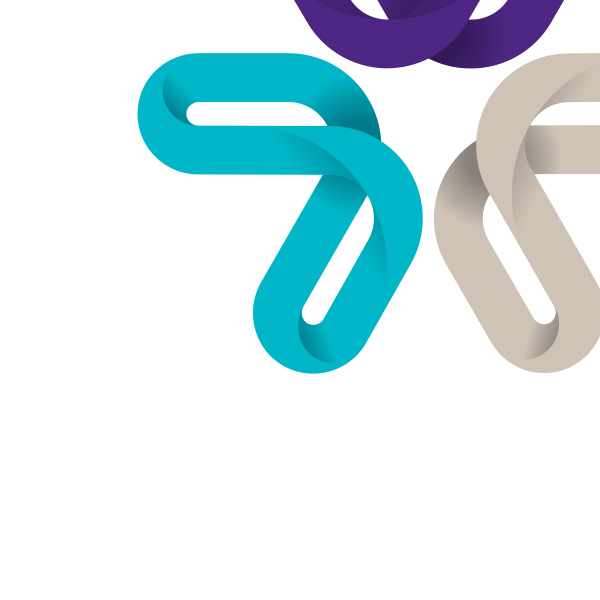-
Business valuations
We offer expert valuation advice in transactions, regulatory and administrative matters, and matters subject to dispute – valuing businesses, shares and intangible assets in a wide range of industries.
-
Capital markets
You need corporate finance specialists experienced in international capital markets on your side if you’re buying or selling financial securities.
-
Complex and international services
Our experience of multi-jurisdictional insolvencies coupled with our international reputation allows us to deliver the best possible outcome for all stakeholders.
-
Corporate insolvency
Our corporate investigation and recovery teams can help you manage insolvency situations and facilitate the best outcome.
-
Debt advisory
An optimal funding structure for your organisation presents unprecedented opportunities, but achieving this can be difficult without a trusted advisor.
-
Expert witness
Our expert witnesses analyse, interpret, summarise and present complex financial and business-related issues which are understandable and properly supported.
-
Financial models
A sound financial model will help you understand the impact of your decisions before you make them. Talk to us about our user-friendly models.
-
Forensic and investigation services
We provide investigative accounting and litigation support services for commercial, matrimonial, criminal, business valuation and insurance disputes.
-
Independent business review
Is your business viable? Will it remain viable in the future? A thorough independent business review can help your organisation answer these fundamental questions.
-
IT forensics
Effective ESI analysis is integral to the success of your business. Our IT forensics experts have the technical expertise to identify, preserve and interrogate electronic data.
-
Mergers and acquisitions
Grant Thornton provides strategic and execution support for mergers, acquisitions, sales and fundraising.
-
Raising finance
Raising finance - funders value partners who can deliver a robust financial model, a sound business strategy and rigorous planning. We can guide you through the challenges that these transactions can pose and help you build a foundation for long term success once the deal is done.
-
Relationship property services
Grant Thornton offers high quality independent advice on the many financial issues associated with relationship property from considering an individual financial issue to all aspects of a complex settlement.
-
Restructuring and turnaround
Grant Thornton’s restructuring and turnaround service capabilities include cash flow, liquidity management and forecasting; crisis and interim management; financial advisory services to companies and parties in transition and distress
-
Transaction advisory
Our depth of market knowledge will steer you through the transaction process. Grant Thornton’s dynamic teams offer range of financial, commercial and operational expertise.
-
Corporate tax
Grant Thornton can identify tax issues, risks and opportunities in your organisation and implement strategies to improve your bottom line.
-
Employment tax
Grant Thornton’s advisers can help you with PAYE (payroll tax), Kiwisaver, fringe benefits tax (FBT), student loans, global mobility services, international tax
-
Global mobility services
Our team can help expatriates and their employers deal with tax and employment matters both in New Zealand and overseas. With the correct planning advice, employee allowances and benefits may be structured to avoid double taxation and achieve tax savings.
-
GST
GST has the potential to become a minefield and can be expensive when it goes wrong. Our technical knowledge can help you minimise the negative impact of GST
-
International tax
International tax rules are undergoing their biggest change in a generation. Tax authorities around the world are increasingly vigilant, especially when it comes to global operations.
-
Research and Development
R&D tax incentives are often underused and misunderstood – is your business maximising opportunities for making claims?
-
Tax compliance
Our advisers help clients manage the critical issue of compliance across accountancy regulations, corporation law and tax. We also offer business and wealth advisory services, which means we can provide a seamless and tax-effective offering to our clients.
-
Transfer pricing
Tax authorities are demanding transparency in international arrangements. We businesses comply with regulations and use transfer pricing as a strategic planning tool.
-
Audit methodology
Our five step audit methodology offers a high quality service wherever you are in the world and includes planning, risk assessment, testing internal controls, substantive testing, and concluding and reporting
-
Audit technology
We apply our audit methodology with an integrated set of software tools known as the Voyager suite. Our technology has been developed to produce quality audits that are effective and efficient.
-
Financial reporting advisory
Our financial reporting advisers have the expertise to help you deal with the constantly evolving regulatory environment.
-
Business architecture
Our business architects help businesses with disruptive conditions, business expansion and competitive challenges; the deployment of your strategy is critical to success.
-
Cloud services
Our team is led by cloud business experts who tailor services to the needs of your organisation, from strategy and implementation to ongoing services assurance.
-
Internal audit
Our internal audits deliver independent assurance over key controls within your riskiest processes, proving what works and what doesn’t and recommending improvements.
-
IT advisory
Our hands on product experience, extensive functional knowledge and industry insights help clients solve complex IT and technology issues
-
IT privacy and security
IT privacy and security should support your business strategy. Our pragmatic approach focuses on reducing cyber security risks specific to your organisation
-
Organisational & cultural change
The key to sustainable and future growth is a unified organisation operating within a strong cultural context, where transparency and communication are the priority for Kaimahi, and where visible leadership means walking the talk – but where does that journey begin?
-
Payroll assurance
Our specialist payroll assurance team can conduct a review of your payroll system configuration and processes, and then help you and your team to implement any necessary recalculations.
-
PCI DSS
Our information security specialists are approved Qualified Security Assessors (QSAs) that have been qualified by the PCI Security Standards Council to independently assess merchants and service providers.
-
Process improvement
As your organisation grows in size and complexity, processes that were once enabling often become cumbersome and inefficient. To maintain growth, your business must remain flexible, agile and profitable
-
Procurement/supply chain
Procurement and supply chain inputs will often dominate your balance sheet and constantly evolve for organisations to remain competitive and meet changing customer requirements
-
Project assurance
Major programmes and projects expose you to significant financial and reputational risk throughout their life cycle. Don’t let these risks become a reality.
-
Risk management
We understand that growing companies need to establish robust internal controls, and use information technology to effectively mitigate risk.
-
Robotic process automation (RPA)
RPA is emerging as the most sophisticated form of automation used to help businesses become more agile and remain competitive in the face of today’s ongoing digital disruption.
From 1 April 2021, a new 39% personal tax rate applies on income above $180,000. To ensure a consistent taxation of non-cash benefits, FBT rates have also significantly increased.
The single rate alone has increased from 49.25% to 63.93%, and the top mixed rates have similarly increased. For most employers, if no additional action is taken, their FBT cost of providing non-cash benefits could be expected to increase by up to 30% in the 2021 year.
The good news - particularly for employers who provide non-cash benefits to employees earning less than $180,000 - is that these increased costs may well be avoided with good (and early) planning, and with some changes to the FBT filing options selected.
Current practice
Due to the relatively low top PAYE/FBT thresholds, approximately 90% of employers have paid their FBT using either the single rate or short form alternate rate FBT calculation methods.
Single rate method
This process provides the simplest method of calculation. FBT is calculated and returned quarterly on non-cash benefits at the single rate which is now 63.93%; previously it was 49.25%. The rate is set to result in the same tax cost as if an equivalent taxable payment were made to an employee on the top marginal tax rate; this enables the employee to purchase the non-cash benefit.
Short-form alternate rate method
Under this method, employers pay FBT on non-cash benefits at the ‘alternate rate’ in quarters one to three - 49.25% or 63.93% for benefits to major shareholder employees (previously this was 43% and 49.25%). In quarter four, employers ‘square-up’ the tax on all attributed benefits paid during the year to 63.93% (previously 49.25%). Non-attributed benefits are pooled and taxed at the ‘alternate rate’ - 49.25% or 63.93% for benefits provided to major shareholder employees (previously 42.86% and 49.25%).
Full alternate method
Use of this method has been less common.
Employers pay at the ‘alternate rate’ in quarters one to three (49.25% or 63.93% for benefits to shareholder employees, previously 49.25% and 42.86%). The quarter four calculation is then a ‘square-up’, calculating the FBT on allocated benefits for the year at a rate which correlates with each employee’s marginal tax rate. These rates are set to result in the same tax cost as if an equivalent payment were made to an employee at their marginal tax rate (enabling them to purchase the non-cash benefit). Non-allocated benefits are taxed at a standard rate of 49.25%, or 63.93% for shareholder employees.
Employers paying under the ‘single rate’ or ‘short form alternate’ methods will have usually concluded there is either no tax advantage to performing a ‘full alternate’ method calculation in quarter four (as the receiving employees earn in the top marginal tax rate), or they may have simply accepted the less favourable FBT cost on fringe benefits to avoid the additional time and complexity to calculate the ‘full alternate’ method.
With the significant increase in the FBT rates, and when employees receiving non-cash benefits may no longer earn the top marginal tax bracket, this rationale may well no longer be valid.
The benefits of changing to the ‘full alternate’ method
While this method has a reputation for some complexity, a ‘full alternate’ calculation can be carried out by a business with relative ease once business processes are setup for this.
At its easiest, relevant benefits simply need to be valued and attributed in the calculation to the employee receiving the benefit. Specific categories of benefit, and those below certain thresholds of value, are not required to be attributed and tax is calculated on these at the non-attributed rate.
‘Full alternate’ process setup
Some businesses already calculating FBT under one of the other methods may wish to implement this change by simply carrying on with their existing FBT compliance during the year either at the single rate or alternate rate, while collecting sufficient information to allow for a ‘full alternate’ square-up calculation in the quarter 4 FBT return; this can be carried out by the company or an accountant.
Employers with cash flow restrictions or with large FBT bills may wish to obtain the cash flow advantage of a change to the ‘alternate’ method early in the year and would get benefit from a quarter one move to an ‘alternate’ basis.
Employers looking apply the ‘full attribution’ method will often benefit from adopting a purpose designed spreadsheet/web tool to assist with collecting necessary information and performing the FBT calculations. These tools are usually designed to apply FBT rules to assist in calculating the FBT liability from the data provided, and may have functionality to assist in storing data, notes and other records relevant to supporting the filing position. The best tools calculate the most favourable FBT filing position by taking account of available options under tax legislation (including pooling benefits) and can provide all the figures for the preferred option with guidance on how to input these in the FBT return.
How we can help
Your Grant Thornton advisor can help you understand the likely value of any FBT savings from adopting a full alternate rate calculation based on your planned 2021 fringe benefits.




